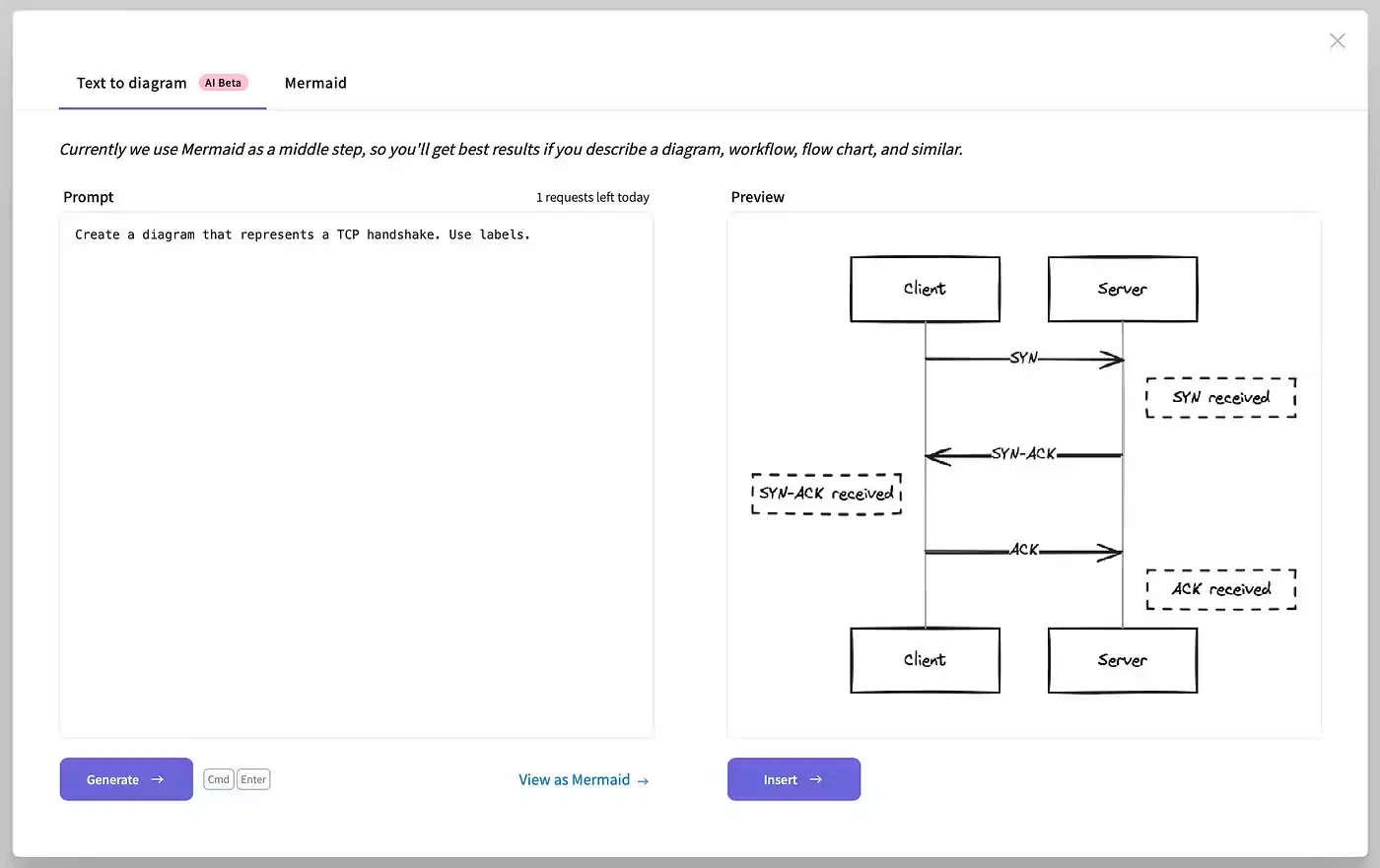EU AI Act - What you need to know about the AI regulation!
More topics: OpenAI launches new voice mode for ChatGPT, and Google Gemma 2 2B outperforms GPT-3.5 and Mixtral 8x7B

Hi AI Enthusiasts,
Welcome to this week’s Magic AI News, where we present you the most exciting AI news of the week. This week, the EU AI Act came into effect, and we have summarized the key points for you!
This week’s Magic AI tool is perfect for people who often create technical drawings, such as software architects! We use the tool to create our free data science cheat sheets. It’s the best drawing tool we have ever used. Stay curious! 😎
Let’s explore this week’s AI news together. 👇🏽
Top AI news of the week
🇪🇺 EU AI Act: What you need to know about the AI regulation!
The EU AI Act has been in force since August 1, 2024. However, some regulations do not yet apply to all areas. The law is valid in all EU Member States. The AI Act divides AI systems into four risk classes:
- Forbidden applications (Unacceptable risk) from February 2, 2025:
- Exploitation of vulnerabilities of persons and manipulation and use of subliminal techniques
- Social scoring for public and private purposes
- Emotion recognition in the workplace and education institutions, unless for medical or safety reasons
- Biometric categorization of natural persons to deduce or infer their race, political opinions
- Labelling or filtering of datasets, and categorizing data in the field of law enforcement will still be possible!
- High risks from August 2, 2027:
- AI systems that potentially hurt people’s safety or their fundamental rights (as protected by the EU Charter of Fundamental Rights).
- Before placing a high-risk AI system on the market, providers must subject it to a conformity assessment.
- Minimal risks:
- The majority of AI systems can be developed and used under existing laws without additional legal requirements.
- Providers of these systems can choose to follow the requirements for trustworthy AI and adhere to voluntary codes of conduct.
- Systemic risks from August 2, 2025:
- This includes general-purpose AI models, including large generative AI models.
- The AI Act obliges model providers to disclose certain information to downstream system providers.
- These models could carry systemic risks if they are very powerful or widely used. Example: Abuse for large-scale cyber attacks, or spreading harmful biases across various applications.
- General-purpose AI models trained with more than 10^25 FLOPs are considered systemic risks.
- Providers of these models must:
- Assess and mitigate risks
- Report serious incidents
- Conduct advanced tests and evaluations
- Ensure the cybersecurity of their models
- Providers of these models must:
- This includes general-purpose AI models, including large generative AI models.
In general, the AI Act will apply two years after entry into force on 2 August 2026, except for the specific provisions (see above).
Our thoughts
In our opinion, it is good that the EU has a framework for the use of AI. You can argue about some points, but in general, it is a step in the right direction. Models trained with more than 10^25 FLOPs are considered systemic risks. This limit is debatable because the size of a model is not necessarily the same as the outgoing risk.
We think also, it is good that the law takes sustainability into account. For example, companies must report on energy consumption during training.
More information
- Artificial Intelligence: Questions and Answers - European Commission
💭 OpenAI launches new voice mode for ChatGPT
OpenAI is starting to provide the advanced voice mode for ChatGPT. You can use the new mode to communicate with ChatGPT in real time. The new voice mode uses GPT-4 and can detect emotions in users’ voices, for example, sadness.
Initially, only a few paying users of ChatGPT will have access to the new voice mode. By the fall of 2024, OpenAI plans to give everyone with a Plus account access to the new mode.
We’re starting to roll out advanced Voice Mode to a small group of ChatGPT Plus users. Advanced Voice Mode offers more natural, real-time conversations, allows you to interrupt anytime, and senses and responds to your emotions. pic.twitter.com/64O94EhhXK
— OpenAI (@OpenAI) July 30, 2024
OpenAI presented the Voice Mode feature at the beginning of the year.
Our thoughts
The ability of the advanced voice mode to understand and respond to emotions in real time conversations is impressive. This functionality could be useful in many areas, such as customer service!
More information
🤖 Google Gemma 2 2B outperforms GPT-3.5 and Mixtral 8x7B
Google unveiled Gemma 2 2B, a tiny AI model with 2B parameters that outperforms larger models like GPT-3.5 and Mixtral 8x7B on various benchmarks.
The details:
- The model produces outsized results by learning from larger models through distillation.
- It runs efficiently on a wide range of hardware (from edge devices and laptops to cloud deployments)
- Open-source, suitable for research and commercial applications
Our thoughts
We think it’s great that there are more and more powerful small language models (SLMs)! SLMs are ideal as local coding assistants. Gemma 2 2B is available at Ollma, which means you can quickly use it as a local AI coding buddy in VSCode with our step-by-step guide.
Have fun with your coding buddy! 😉😉
More information
- Smaller, Safer, More Transparent: Advancing Responsible AI with Gemma - Google Developers Blog
Magic AI tool of the week
Do you want to create beautiful-looking diagrams for a technical topic like the visualization of a TCP handshake? Then, you are looking for an easy-to-use tool.
Excalidraw is exactly the tool you are looking for! This tool makes creating diagrams very easy. It is an open-source, privacy-first, and user-friendly sketching tool. Best of all, you can also use AI assistance to create diagrams from a text prompt (OpenAI API key required).
Wow, this is really cool!
Example:

We use Excalidraw often to create hand-drawn diagrams for social media posts. In addition, we create our popular data science cheat sheets with this tool. The AI feature is a useful addition.
Articles of the week
- Our Journey to Become a Data Scientist
- Mistral’s Codestral: Create a local AI Coding Assistant for VSCode
- Build a Local Chatbot in Minutes with Chainlit
- Struggling with Linear Regression? - Theory and Practice Clearly explained
💡 Do you enjoy our content and want to read super-detailed articles about AI? If so, subscribe to our blog and get our popular data science cheat sheets for FREE.
Thanks for reading, and see you next time.
- Tinz Twins





